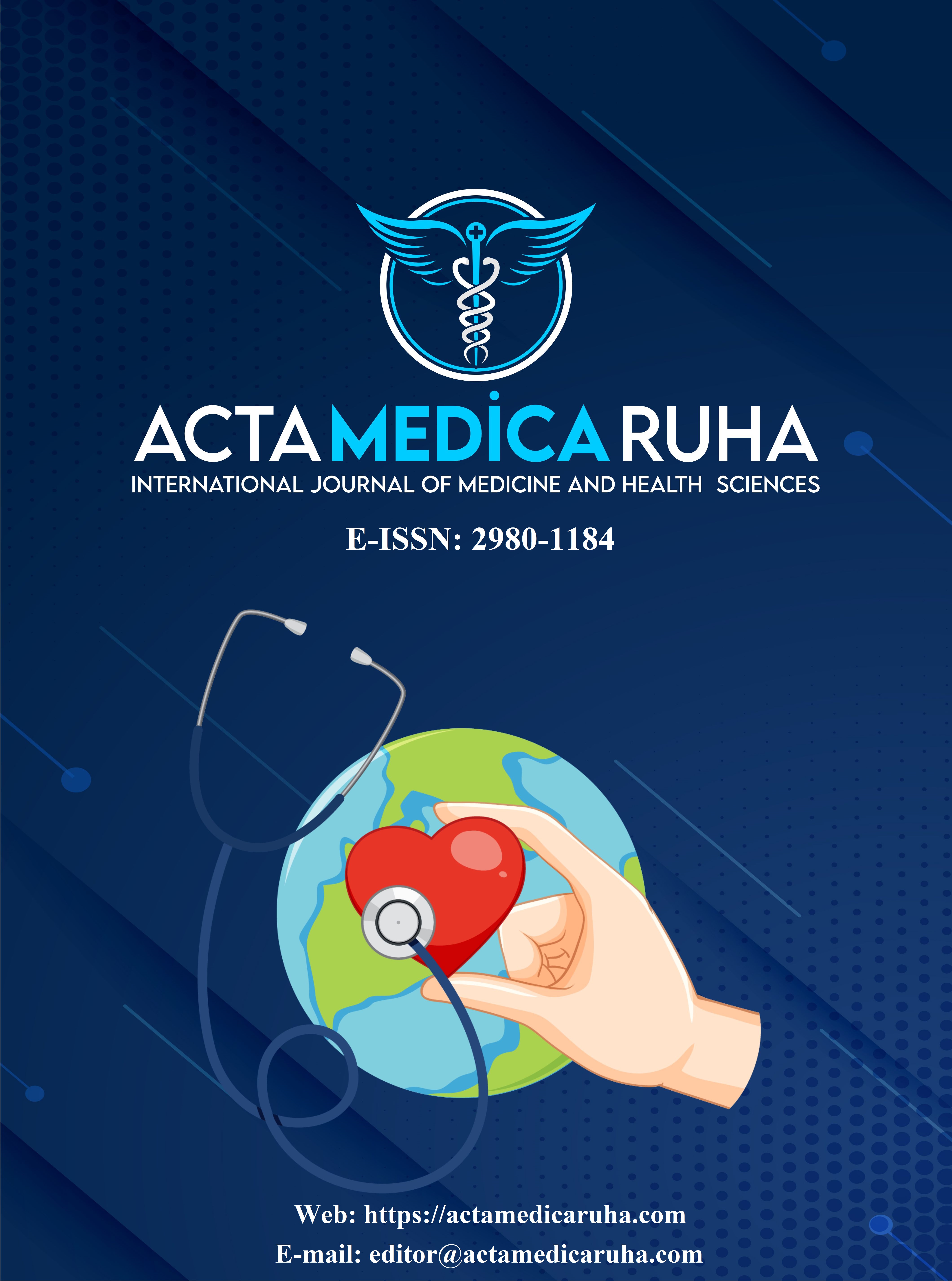Evaluation of the Effectiveness of Child Emergency Disaster Plan Training in Nursing Students
Research Article
DOI:
https://doi.org/10.5281/zenodo.14992409Anahtar Kelimeler:
Children, Disaster Education, Nursing StudentsÖzet
Introduction: Children are one of the groups most affected by disasters. Health professionals have an important role to play in the protection and development of children's health in disasters. It is important and necessary to support nurses and nurse candidates, who are a numerically strong group among health professionals, with training in emergency management of children in disasters to reduce the risks that may occur.
Objective: This study was conducted to evaluate the effectiveness of paediatric emergency disaster plan training for nursing students.
Method: This study was conducted as a qualitative study with 40 students studying in the nursing department of a university who participated in the child emergency disaster plan training. An introductory information form and a semi-structured interview form were used to collect the study data.
Results: The mean age of the nursing students who participated in our study was 22.5±0.7 years and 66.6% of them were female. It was found that 92.5% of the students had not received any training on disaster and emergency management in children and 77.5% of them had no information on disaster and emergency plans for children in hospitals. As a result of the analysis of the data, 5 themes were identified: creating a special disaster management plan for children, organising children's emergency services, ensuring and protecting the safety of children, managing orphaned children and providing coordination.
Conclusion: In this study, it was found that the level of knowledge and awareness of nursing students about emergency disaster management for children was inadequate. However, it was found that the training received by the students helped them to become aware of critical issues such as disaster emergency planning for children, organisation of emergency services and management of orphaned children
Referanslar
Yıldırım M, Bozdağ F, Başdaş Ö. Experiences of nursing students providing support in disaster areas: A qualitative study, Public Health Nursing. 2024; 1622–1632. https://doi.org/10.1111/phn.13412
Özpulat F, Kabasakal E. Knowledge Levels of Nursing Students on Disaster Nursing and Their State of Disaster Preparedness’, International Journal of Medical Research Health Sciences. 2018; 7(8), pp. 165–174.
Avcı S, Kaplan B, Ortabağ T. Hemşirelik Bölümündeki Öğrencilerin Afet Konusundaki Bilgi ve Bilinç Düzeyleri, Resilience. 2020; 4(1): 89–101. https://doi.org/10.32569/resilience.619897
World Health Organization [WHO]. Western Pacific Regional Framework for Action for Disaster Risk Management for Health: Emergencies and Disasters. Regional Office for the Western Pacific, Philippines, 34-47. https://apps.who.int/iris/bitstream/handle/10665/208200/9789290617082_eng.pdf (Accessed 28 November 2024).
International Council of Nurses (ICN). Disaster planning and relief. http:// www. icn. ch/ images/ stories/ documents/ publications/ fact_sheets/ 5a_FSDisaster Respons e.pdf (Accessed 07 December 2023).
Erkin Ö, Yenigün S, Gümüş C, Coşğun M, Aslan G. Afet ve Acil Durum Yönetimi Başkanlığı (AFAD) Afet Eğitimlerinin Hemşirelik Öğrencilerinin Afet Yönetimi Algısına Etkisi’, Afet ve Risk Dergisi. 2024; 7(1): 47–61. https://doi.org/10.35341/afet.1420631
İytemur A, Tekeli Yeşil S. Bir Üniversite Hastanesinde Çalışan Hemşirelerin Hastane Afet ve Acil Durum Planları ile İlgili Görüşlerinin İncelenmesi, Hacettepe Üniversitesi Hemşirelik Fakültesi Dergisi. 2020; 7(2): 138–48. https://doi.org/10.31125/hunhemsire.763162
Grimes A, Sparke V, Rouen C,West C. Preparedness and resilience of student nurses in Northern Queensland Australia for disasters, International Journal of Disaster Risk Reduction. 2020; 48: 101585. https://doi.org/10.1016/j.ijdrr.2020.101585
Satoh M, Iwamitsu H, Yamada E et al. Disaster Nursing Knowledge and Competencies Among Nursing University Students Participated in Relief Activities Following the 2016 Kumamoto Earthquakes’, SAGE Open Nursing. 2020; 4: 1–9. https://doi.org/10.1177/2377960818804918
Keskin AY, Alan H. Assessment of Undergraduate Nursing Students’ Self-Efficiency in Disaster Response’, E-Journal of Dokuz Eylul University Nursing Faculty. 2023; 16(3): 332–42. https://doi.org/10.46483/jnef.1327474
Dinh TTH, Tori K, Hines S. Interprofessional disaster exercises for undergraduate nursing students: a scoping review’, JBI Evidence Synthesis. 2023; 21(12): 2281–308. doi: 10.11124/JBIES-22-00221.
Ljunggren F, Moen IL, Rosengren K. How to be Prepared as a Disaster Nursing: An Interview Study With Nursing Students in Indonesia’, Health in Emergencies and Disasters Quarterly. 2019; 5(1): 53–62. doi: 10.32598/hdq.5.1.334.1.
Taşkıran G, Baykal Ü. Disasters and Nurses’ Preparedness for Disasters in Turkey: Literature Review’, Sağlık ve Hemşirelik Yönetimi Dergisi. 2017; 4(2): 79–88. doi: 10.5222/shyd.2017.079.
Manav G, Nazik F. Doğal Afetlerde Çocuk Sağlığı ve Pedi̇atri Hemşi̇resi̇ni̇n Rolü, Gevher Nesibe Journal of Medical & Health Sciences. 2023; 8(2): 347–53.
The National Association of Pediatric Nurse Practitioners(NAPNAP). Position Statement. Pediatric Nurse Practitioners’ Role in Disasters Involving Children. Journal of Pediatric Health Care. 2011; 25(4): 9A-10A.
Fox L, Timm N. Pediatric Issues in Disaster Preparedness: Meeting the Educational Needs of Nurses-Are We There Yet?’, Journal of Pediatric Nursing. 2008; 23(2): 145–52. https://doi.org/10.1016/j.pedn.2007.12.008
Loke AY, Guo C, Molassiotis A. Development of disaster nursing education and training programs in the past 20 years (2000–2019): A systematic review. Nurse Education Today. 2021; 99: 104809. https://doi.org/10.1016/j.nedt.2021.104809
Yale University, Educatıon of Nursing Student. https://nursing.yale.edu/search/node/Educational%20content (Accepted Date: 16.12.2024).
Labrague LJ, Hammad K, Gloe DS et al. Disaster preparedness among nurses: a systematic review of literature. International Nursing Review. 2018; 65(1): 41-53. https://doi.org/10.1111/inr.12369
Inkaew W, Chompunud S. Effects of an interactive teaching method on perceived disaster nursing competencies of undergraduate nursing students. Health Emergency and Disaster Nursing. 2018; 5(1): 25-31. https://doi.org/10.24298/hedn.2016-0008
Huh SS, Kang HY. Effects of an educational program on disaster nursing competency, Public Health Nursing. 2019; 36(1): 28-35. https://doi.org/10.1111/phn.12557
Pediatric Disaster Centers of Excellence. Only 47% of hospitals have a disaster plan that includes pediatric patients. And we’re working to improve that. https://www.pediatricdisaster.org/ (Accepted Date: 16.12.2024).
Colaizzi PF. Existential phenomenological alternatives for psychology, Psychological Research as the Phenomenologist Views It/Oxford University Press. 1978: 48-71
Polit DF, Beck CT. Generalization in quantitative and qualitative research: Myths and strategies. International Journal Of Nursing Studies. 2010; 47(11): 1451-1458. https://doi.org/10.1016/j.ijnurstu.2010.06.004
Afetlerde Ve Acil Durumlarda Sağlık Hizmetleri Yönetmeliği.https://www.resmigazete.gov.tr/eskiler/2021/05/20210525-3.htm (Accessed 09 December 2023).
Directorate of Healthy Services. https://dhs.kerala.gov.in, https://dhs.kerala.gov.in/en/sample-page/ (Accessed 10 December 2023).
Assam State Disaster Management Authority. https://www.asdma.gov.in/studies&projects.html (Accessed 10 December 2023).
The National Disaster & Emergency Management University. https://search.usa.gov/search?affiliate=netc&query=nurse (Accessed 11 December 2023).
Disaster Preparedness, The California Child Care Disaster Plan. https://cchp.ucsf.edu/resources/disaster-preparedness (Accessed 12 December 2023).
Afetlerde Çocuk Acil Hemşireliği Kursu. https://www.inonu.edu.tr/inuhaber/haber/5016/tubitak-destekli-afetlerde-cocuk-acil-hemsireligi-kursu-basladi (Accessed 08 December 2023).
Yüksek Öğretim Kurumu. https://www.yok.gov.tr/Documents/Kurumsal/egitim_ogretim_dairesi/Ulusal-cekirdek-egitimi-programlari/hemsirelik_cekirdek_egitim_programi.pdf
https://nursing.yale.edu/search/node/Educational%20content
Topal S, Özhanlı Y, Çaka SY, Gürbüz Y. Professional competences of emergency department nurses working in the earthquake region on triage management in children and the difficulties experienced by nurses in the decision-making process: A qualitative study. International Journal of Disaster Risk Reduction. 2024; 113: 104844.
Dağ YS, Zengin M, Yayan EH, Dağ S. Understanding the impact of natural disasters on children within first hours and days after an event: A phenomenological study through the experience of nurses. International Nursing Review. 2024. https://doi.org/10.1111/inr.13031
Hung MSY, Lam SKK, Chow MCM, et. al. The effectiveness of disaster education for undergraduate nursing students’ knowledge, willingness, and perceived ability: An evaluation study. International journal of environmental research and public health. 2021; 18(19): 10545. https://doi.org/10.3390/ijerph181910545
Disaster Child Civil Coordination Team. Children unaccompanied, system inadequate. https://afetcocuk.koordinasyon.org/cocuklar-refakatsiz-sistem-yetersiz/ (Accessed 26 November 2024).
Alim S, Kawabata M, Nakazawa M. Evaluation of disaster preparedness training and disaster drill for nursing students. Nurse education today. 2015; 35(1): 25-31. https://doi.org/10.1016/j.nedt.2014.04.016
Hosseini MM, Hosseini TM, Qayumi K, Baeradeh N. Game-based vs. case-based training for increasing knowledge and behavioral fluency of nurse students regarding crisis and disaster management; a quasi-experimental study. Archives of Academic Emergency Medicine. 2022; 10(1). https://doi.org/10.22037/aaem.v10i1.1739
Aluisio AR, Daniel P, Grock A et al. Case-based learning outperformed simulation exercises in disaster preparedness education among nursing trainees in India: A randomized controlled trial. Prehospital and disaster medicine. 2016; 31(5): 516-23.
Ituma OW, Ranse J, Bail K, Hutton A. Disaster education for Australian nursing students: An integrative review of published literature to inform curricula. Collegian. 2022; 29(1): 93-9. https://doi.org/10.1016/j.colegn.2021.04.005
İndir
Yayınlanmış
Nasıl Atıf Yapılır
Sayı
Bölüm
Lisans
Telif Hakkı (c) 2025 Acta Medica Ruha

Bu çalışma Creative Commons Attribution 4.0 International License ile lisanslanmıştır.











